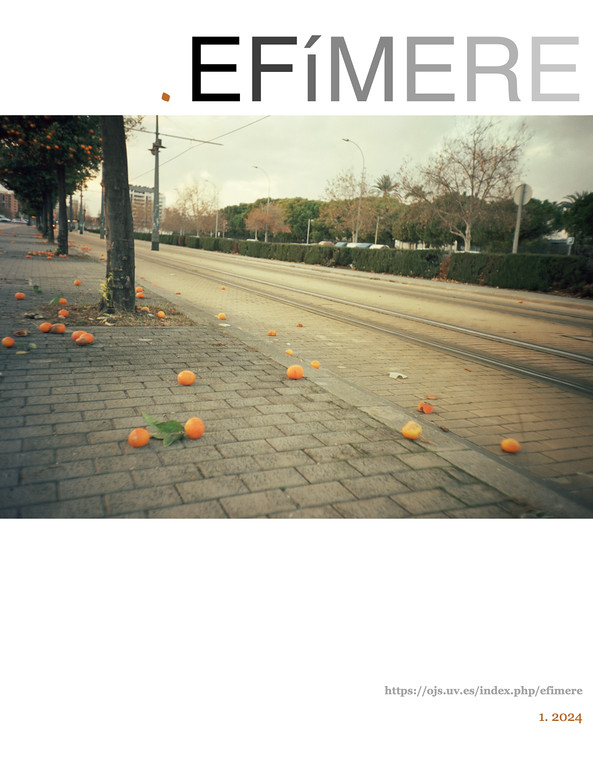Artistic multidisciplinarity and the influence of aesthetics in the Moors and Christians Festivals
DOI:
https://doi.org/10.7203/efimere.1.26060 Abstract
Abstract
The festival of Moors and Christians is erected ethnologically as one of the representations of the reconquest that began to appear around the 18th century. From the beginning and during the evolution of this tradition, art has been a fundamental part, starting with music, costume design, gastronomy and the plastic arts, which have mainly been incorporated in their own personality into from the second half of the 20th century. The plastic arts are manifested by nourishing the parades with scenographies, chromaticism, the spatial arrangements and the arrangement of the retinues of the different protagonists of the festivities, without leaving aside the different forms of parading of each of the filaes (or troupes) and of town In this work we aim to show how indispensable art in general, and Fine Arts in particular, is as a driving force in the evolution of these festivals, and how, conversely, the industry linked to the festival maintains trades that are in the process of extinction. The main part of the research that we present is to try to fit the art linked to this party into a systematized framework. The innovation of art is closely linked to the evolution of the party. Moorish and Christian festivals mark the identity of a town and tie it to culture and traditions through the Visual Arts, which emphasize the identity traits, the idiosyncrasy of the town.
 Downloads
Downloads
 References
References
Agustí, D. (2003) Los Almogávares. la expansión mediterránea de la Corona de Aragón. Ed. Silox.
Biedermann, H. (1993). Diccionario de símbolos. Paidós.
Bolea, C. Almogávares en Bizancio, Súbditos de Aragón, vasallos de nadie. Desperta Ferro, 22, 44-52.
Botella, A. M. (2015). La música de Moros y Cristianos. Evolución de un género original para banda. Revista de Fiestas de Moros y Cristianos de Ontinyent, 316.
Boya, Á. (2014). La Compañía de Almogávares en Grecia. Liber Factory.
Castelló, A. (2022). La devoción a San Jorge de Miguel Gironés. Documento electrónico. [consulta: 26/11/2022]
Cirlot, J. E. (2006). Diccionario de símbolos. Siruela.
Domene, J. F. (2018). Las Fiestas de Moros y Cristianos en Villena. Universidad de Alicante. Tesis Doctoral.
Gregori, M. D. (2005). El diseño de la indumentaria en las fiestas de moros y cristianos de Alcoy. Tesis. Universitat Politècnica de València.
De Moncada, F. (2016). Los catalanes y aragoneses que conquistaron oriente. Almogávares. Guadarramistas.
Mallol, J. (2000). La estampida. Final de la guerra civil en el puerto de Alicante. J. Mallol.
Moreno, F. (1999). La represión en la posguerra. En Juliá, S. (Coord). Víctimas de la guerra civil. Temas de hoy.
Pascual, J. R. (2001). La música de moros i cristians: història, vigència i defensa d'un gènere bandístic, en linea. (Ponència). Simposium de música festera de la vall d’albaida. https://pascualvilaplana.com/wp-content/uploads/2021/12/simposium.pdf [consulta 16/09/2022]
Rubio, A. (2010). Almogavares: del reino de Aragon a Bizancio. Deslan.
Ruiz, A. (2002) Los días de Gilgamesh. ARC ediciones.
Downloads
Published
How to Cite
-
Abstract102
-
PDF (Español)61








